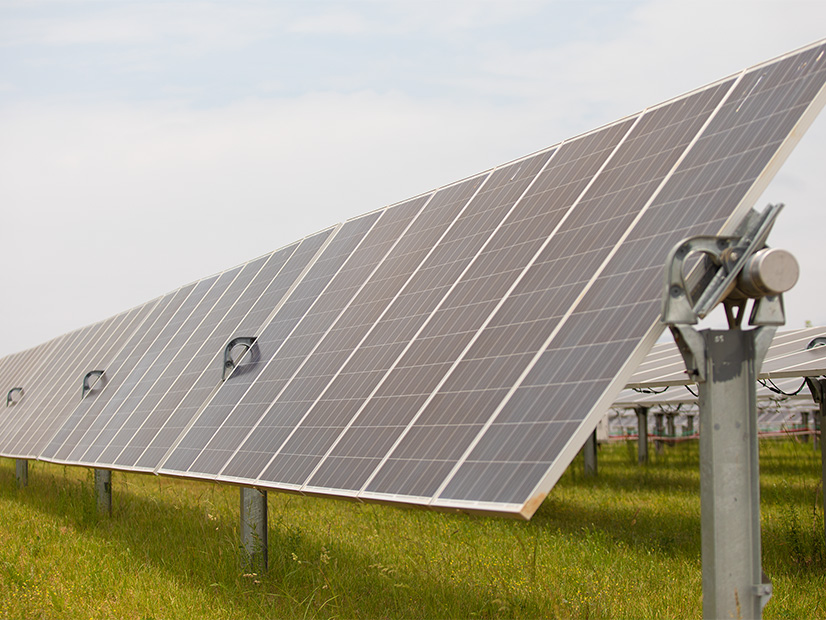Major Virginia utilities do have programs to offer assistance with solar energy to low-income customers, but they’re all but keeping them secret, the Virginia Clean Energy Advisory Board (CEAB) heard at its Nov. 3 meeting.
None of the three utilities represented at the meeting — Dominion Energy (NYSE:D), Appalachian Power and Kentucky Utilities/Old Dominion Power (NYSE:PPL) — has an active outreach program to low-income customers concerning solar energy, representatives of the companies admitted.
For example, Kentucky Utilities/Old Dominion Power’s marketing of its programs is “limited to information on the website,” Kendrick Riggs, an attorney representing the company, said in response to a question from a board member. “We do reach out to nonprofits that help customers pay their bills.”
“In my organization, we have found a lack of knowledge about programs when they’re only posted on websites, and also skepticism — they sound too good to be true,” CEAB member Susan Kruse, executive director of the Community Climate Collaborative, a policy research and advocacy group in Charlottesville, Va., said in response. “But people trust their electricity providers.”
Nevertheless, the programs are slowly getting off the ground. Nathan Frost, Dominion Energy’s director of new technology and energy conservation, cited an energy conservation and solar energy program for low income, elderly and disabled individuals that launched in the first quarter of this year. HB 2789, enacted in 2019, requires Dominion Energy and Appalachian to make up to $25 million in incentives available in a three-year program for energy conservation measures, and another $25 million in incentives for the installation of solar panels.
The panels are to be installed behind the participant’s meter and net-metered, with the solar panels and associated inverters and connecting equipment owned by the program participant. To be eligible, customers must have already participated in the energy conservation program, or in a previously existing program with HVAC-related measures. Generally, customers are eligible if they have a total household income under 80% of local median income per the Virginia Housing Development Authority, or under 60% of the state median income per the Virginia Department of Housing and Community Development, whichever is greater.
“We are going to work with the state weatherization network and solar installers,” Frost said, adding that Dominion Energy plans to start soliciting qualified installers via a request for proposals (RFP)/request for qualifications (RFQ) by the end of the month. Following a 60-day feedback period for the installers, which will help Dominion Energy learn if they are experiencing supply-chain problems due to the pandemic, the plan is to launch the program next spring.
“In our prudency filing before the SCC, we estimated that cumulative participation over the three-year pilot period would be just over 1,600 customers,” Lucy Rhodes, a spokesperson for Dominion Energy, said in an email to NetZero Insider after the CEAB meeting.
Also next year, Frost said, Dominion Energy is expecting a final order from the State Corporation Commission greenlighting the company’s shared solar program. If all goes well, that program’s official launch will come in July 2023.
Troubles Getting Projects Online, Reaching Customers
Appalachian Power serves an economically stagnant area, where baseboard heating and electric heaters in trailers are common and the load is declining, Noelle Coates, senior counsel at parent company American Electric Power (NASDAQ:AEP), told the CEAB. “We’ve had a lot of problems getting projects online,” she said about solar energy, citing “supply chain problems.”
In August, the Leatherwood solar facility came online for Appalachian Power in Henry County, Va., Teresa Hall, a spokesperson for AEP, told NetZero Insider. The 20-MW facility is in the southern part of the state, close to the North Carolina border. “Appalachian Power does not have any current plans to use the output from the facility, which is the first solar facility online in Virginia for us, for any specific plans targeting middle- or low-income Virginians,” she said. “Importantly, all of our customers — regardless of income level — benefit from this source of cost-effective, carbon neutral energy.”
When CEAB Chair Hannah Coman asked whether Appalachian Power had a marketing program for low-income customers for solar power, Coates responded, “We need to [study] how our customers receive their information and target it.” Coman suggested that the board would like “an annual check-in” for Appalachian Power.
Lack of information about solar power programs that may be available to them is far from the only barrier facing low- and moderate-income utility customers. Riggs noted that 55% of the electric customers of Kentucky Utilities/Old Dominion Power in Wise County, where most of its Virginia customers are, have a household income under $50,000 a year. In answer to a question from CEAB member Sam Brumberg, Riggs said, “Low-income customers often lack the funds for net metering. The largest problem is the housing stock — it needs more insulation.”
No organizations representing LMI customers spoke at the meeting, The Coalition on Community Solar Access, and Appalachian Voices did not respond to requests for comment.



